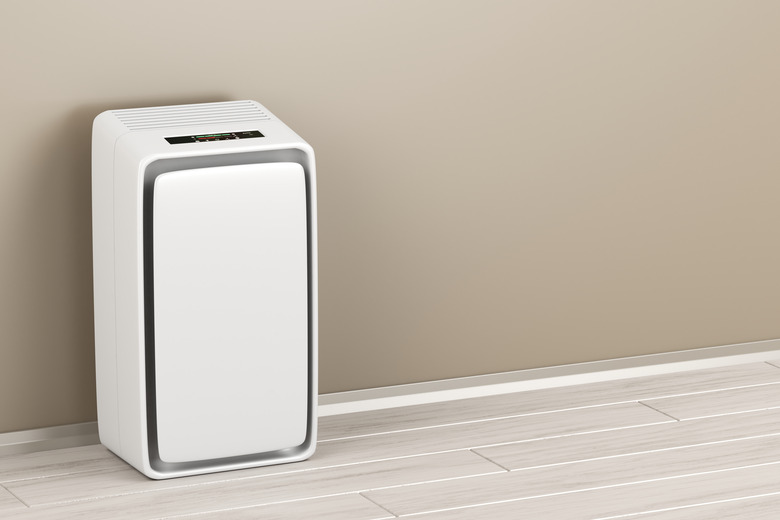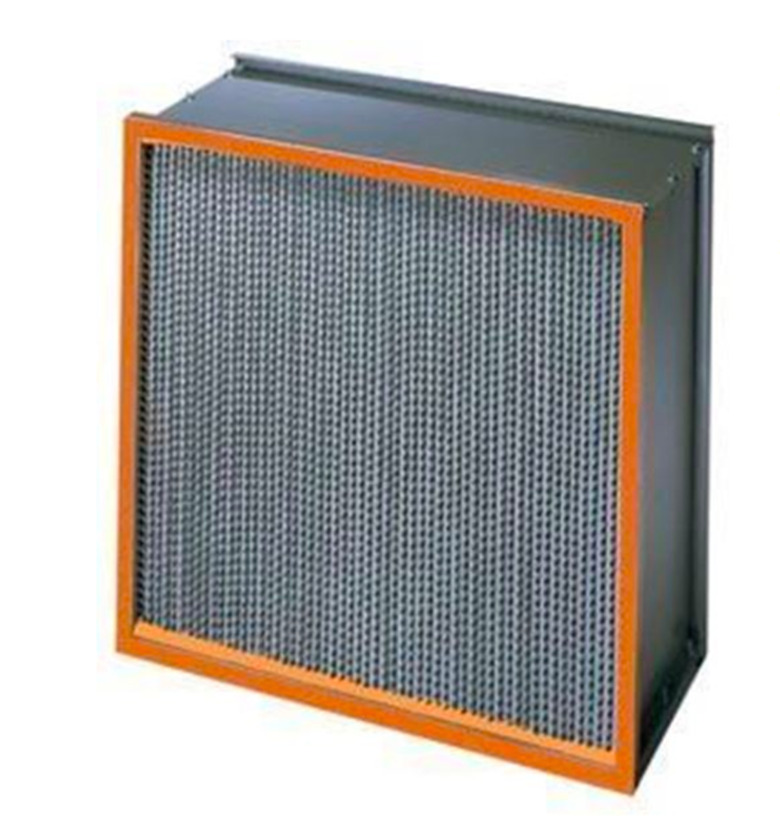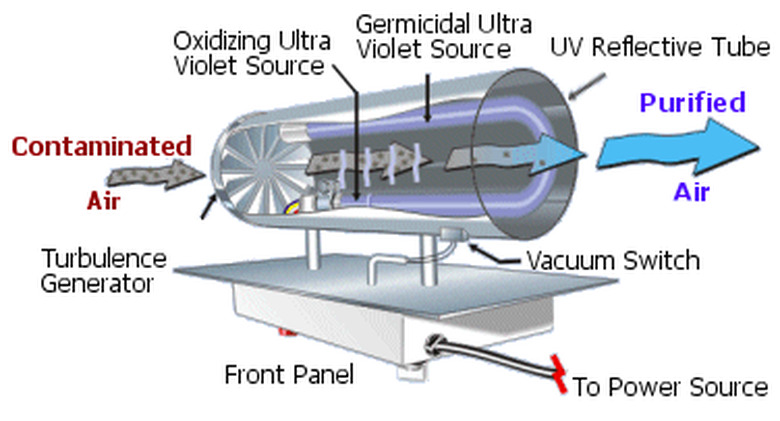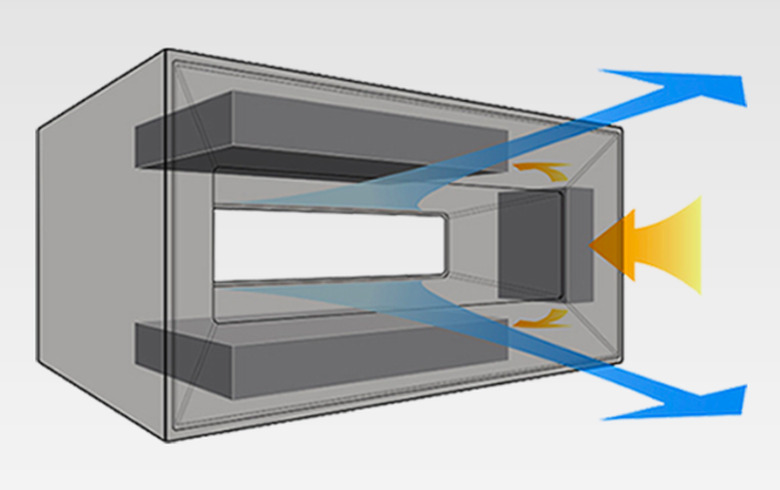Air Purifiers: How They Work And Why You Need One
The decision to keep an air purifier running in your house isn't a slam-dunk. To be effective, it has to be on 24 hours a day, and that can push up your energy bill from $50 to $150 a year, depending on the model. Add to this the costs of filters and the upfront cost of the unit itself, and you could end up paying pay as much as $500 a year. Is cleaner air worth this extra cash? The answer depends on the ambient air quality in your home and your overall health.
Depending on the model, an air purifier can remove particulate matter, VOCs or pathogens such as mold spores and bacteria from the air you breathe, and some units can handle all of these. People with allergy problems or respiratory diseases like emphysema or COPD are the most likely to benefit from an air purifier, but so can sensitive folks who are affected by volatile organic compounds (VOCs) or residual smoke from cigarettes or wildfires. An air purifier is no substitute for fresh air from an open window, but when that air is full of pollen or smoke from a nearby fire, keeping the windows closed and an air purifier running becomes almost a survival strategy.
The bulk of commercially available air purifiers incorporate a high-efficiency particulate air (HEPA) filter, which can remove as much as 99 percent—or more—of particles more than a few microns in size. Carbon filtration, which removes VOCs and odors, is also common. Some models bolster HEPA and carbon filtration with ultraviolet radiation, which kills pathogens. Others create charged particles, or ions, to attract pollutants or make them fall out of the air. The most modern purification technology, p__hoto electrochemical oxidation (PECO), produces free radicals that oxidize VOCs, mold spores and bacteria to break them apart and render them harmless. Many air purifiers combine several of these purification strategies.
How Air Filtration Works
How Air Filtration Works
HEPA filters were developed by the U.S. military during World War II for use in gas masks. A typical HEPA filter consists of multiple layers of V-shaped glass-like paper separated by sheets of corrugated aluminum. When a fan blows ambient air through a very good HEPA filter— one with a Minimum Efficiency Reporting Value (MERV) rating of 16 to 18—pollutants stick to the filter material, and the emergent air is free of particles larger than about 0.3 microns. A high-efficiency HEPA filter can even catch bacteria. The pollutants eventually clog the filter, though, and since the filter can't be cleaned, it needs replacement at regular intervals.
By itself, a HEPA filter can't remove all VOCs or odor-causing pollutants, so many air filtration systems also include a carbon filter. This type of filter adsorbs compounds such as formaldehyde, benzene and toluene that off-gas from such sources as upholstery fabrics, air fresheners, pressed wood furniture, paints and adhesives.
An air filtration system isn't the same as an air purifier. Filters may remove pathogens from the air, but they don't kill them, and the pathogens collect on the filters and can end up recirculating through the air. A fan must run constantly to keep air circulating through the filter, and such fans are often loud and use a lot of energy.
Ultraviolet Air Purification
Ultraviolet Air Purification
The sun emits an entire spectrum of ultraviolet radiation, and fortunately, the earth's atmosphere filters 100 percent of the most harmful type. This radiation, known as UV-C, harms cells by destroying nucleic acid and disrupting their DNA. This principle is used in UV air purifiers. Because it has an internal lamp that emits this harmful radiation working in conjunction with a HEPA filter, a UV air purifier not only filters out mold spores, bacteria and other pathogens, but it also kills them. The lamp is in a radiation-proof enclosure, so no one in the vicinity of the air purifier is in any danger of exposure.
Ionization Air Purifiers
Ionization Air Purifiers
Ionization air purifiers have been around since the 1990s and can work with or without a HEPA filter. They employ one of two strategies. In the first, a pair of oppositely charged electrostatic plates creates an electric field that charges the particles that pass between them. The charged particles precipitate out of the air and collect on the plates, which must be cleaned periodically. Electrostatic precipitators can remove some of the smallest and most dangerous particles, but they generate ozone, which is itself a pollutant and dangerous for people with respiratory problems.
The second type of ionization air purifiers emits a stream of negatively charged ions that collect on pollutants, increasing their weight and charge and forcing them to settle out of the air. The problem with this approach, besides the fact that it also generates ozone, is that the particles stick electrostatically to the furniture, carpets and even your lungs. This is not a good solution for people with allergies or respiratory ailments.
PECO—the New Air Purifying Technology
PECO—the New Air Purifying Technology
PECO (Photo Electrochemical Oxidation) is an air purification technology developed by NASA. Models that use this technology generate UV-A radiation, which is the least energetic and harmful type of ultraviolet radiation, to energize a nanocatalyst and initiate an oxidative chemical reaction on its surface. It is this reaction that removes impurities from the air. PECO technology is similar to PCO (Photocatalytic Oxidation) technology employed in other ultraviolet air purification systems. Because it relies on UV-A radiation instead of more energetic and dangerous UV-C radiation, however, a PECO system does not generate ozone or pollutants such as formaldehyde and acetic acid, which are byproducts of PCO systems. One company that markets PECO air purifiers claims its products are the most efficient air purifiers on the market. They employ quiet, low-demand electric blowers that consume only about as much power as an incandescent light bulb.
Choose According to Your Needs and Budget
Choose According to Your Needs and Budget
An air purifier will set you back anywhere from $150 to $800. Even if you do as the EPA recommends and purchase an Energy Star rated model, you'll spend about as much on electricity to run it as you would on a similarly rated refrigerator.
Air purifiers do have their disadvantages, but they also offer benefits, especially for people with allergies and respiratory problems. Keep in mind that an air purifier isn't a whole-house appliance. It's designed to clean the air in a single room only, and the size of machine you need depends on the square footage of the room. Also, remember that operating an air purifier must be accompanied by good cleaning practices. By itself, an air purifier won't keep your home odor-free if you don't do something about the source of the odors, and it won't solve a mold problem if you don't take steps to eradicate the mold.




